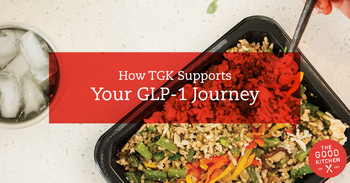A Consumer's Guide to Meat Labels and Certifications
What you need to know about meat and meat certifications, from grass-fed to organic, free range to natural, animal welfare approved and the American Grassfed Association
Let's face it, in the world of food marketing, labels can be confusing. In fact, there are many "smoke and mirrors" tactics out there that can confuse even the most savvy consumer, especially those searching for grassfed meats.
Terms such as certified organic, natural, vegetarian fed and grassfed have become dizzying buzz words that make it difficult for consumers to make the best decision for themselves. Not to worry, we've provided an easy guide to popular labels and terminology to help you have a better understanding of what you are buying into.
Be warned. Not all meat is created equal.
USDA Certified Organic: The USDA Certified Organic labeling speaks of the limits placed on the use of chemicals, pesticides, hormones, antibiotics and other inputs. This term does not qualify an animal as grassfed. In fact, it can deem only that the feed administered to the cattle (which is often grain) is organic. As a rule, almost all commercial beef (like Certified Angus Beef) is grain finished. Moreover, this labeling does not define whether an animal receives access to pasture.
USDA Natural: To use the term "natural" on a food label, the USDA requires only three simple things: (1) the product must be minimally processed, (2) the product cannot contain any artificial ingredients and (3) the product cannot contain any preservatives. The USDA has no specific restriction on management practices during the life of the animal. Hence, most commercial cattle carrying the USDA Natural label are not monitored for animal welfare and do not specify whether an animal was grassfed.
USDA Grassfed Beef: The USDA defines grassfed beef for animals who have eaten a diet consisting of 100% freshly grazed pasture and stored grasses. This terminology can be tricky because it does not indicate whether cattle have access to pasture. In fact, it is acceptable for cattle to be raised on feedlots under this label as long as they are raised on harvested forage. Moreover, cattle can be given supplements, antibiotics and synthetic hormones and still maintain the USDA grassfed label.
AGA Grassfed Beef: The American Grassfed Association (AGA) adheres to a separate and more strict definition of grassfed beef which includes a diet of 100% forage, no antibiotics or hormones, access to pasture and no confinement. AGA-certified products are the ones to seek out when looking for proper grassfed standards. An AGA certification guarantees that an animal has eaten nothing but grass from weaning to harvest.
Animal Welfare Approved: This is an important label to look for when it comes to the humane treatment of animals as it is the highest standard for animal welfare. This certification guarantees that animals are raised outdoors on the pastures of family farmers. The AWA certification is unbiased and completely transparent. It is not dependent on farmer fees and, according to the World Society for the Protection of Animals, offers the "most stringent" human animal welfare standards.
At TGK, we source our meats from Hickory Nut Gap, producers of grassfed and grass finished beef. Each week, we take a trip to Asheville to meet with our farmers face-to-face and pick up our meat haul.
For more information, check out this resource for meat terminology from the American Grassfed Association.
Our business thrives on real food and we believe the best thing you can do to protect yourself from misleading claims is to ask questions. Or better yet, know your farmers. Transparency is crucial to food knowledge and subsequent health. Ask the people you buy from about their farmers and start a conversation.
Wanna chat with us? We'd love to hear from you. Email us at info@thegoodkitchen.com
Browse more data visualization.






